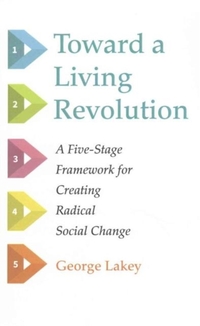44.95
2 - 4 Weken
The Arab Awakening and other nonviolent insurrections have often failed to produce lasting democratic change. A believer in empowerment, Lakey proposes a stage-by-stage developmental framework to get better, more transformational results. Still incorporating the nonviolent coercive force that has brought down dictators, Lakey uses historical ""best practices"" from movements to show how people can grow a revolution that roots itself even while it confronts. The five stages begin with consciousness change, lifting an intersectional vision that inspires and provides the basis for a critical mass to join the movement as it pushes through each developmental stage. Lakey shows how to reconcile pre-figurative alternative institutions with confrontive direct action teams, making the most of inherent synergistic potentials. With actual stories from confrontation with violent authorities he describes what works best for unifying and building the movement to the point where it can carry out the mass noncooperation that opens a power vacuum. Earlier democratic organizing structures--growing as the strategy unfolds--can then fill the vacuum. This stage prevents a relapse into the old oppression and defends the new society against counterrevolutionary forces. Although focused on how each society can realize its own revolution, this book acknowledges the context of global power and proposes a vision for transformed world institutions that are on the side of peace and justice. The principles in the book have particular application in the climate crisis humanity now faces, which is why the book describes a living revolution.

- : George Lakey
- : Wipf & Stock Publishers
- : 9781498292696
- : Engels
- : Paperback
- : 304
- : maart 2016
- : 304
- : 203 x 127 x 16 mm.
- : Samenleving en cultuur: algemeen
